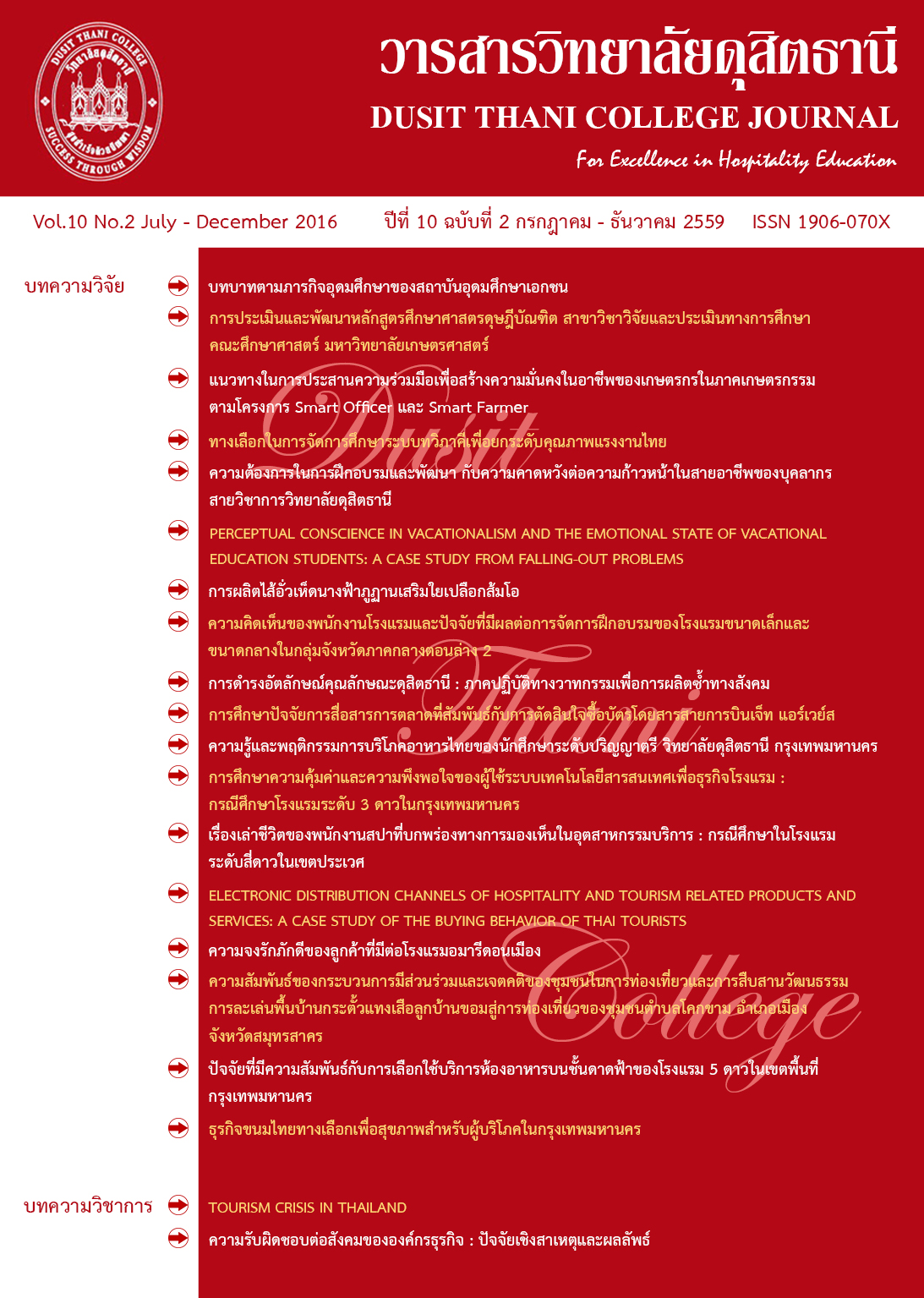THE PRODUCTION OF PHOENIX MUSHROOM SAI AUA MIXED WITH FIBER FROM POMELO PEEL
Main Article Content
Abstract
The objectives of this research were to divided into three part. First, study mixed of phoenix mushroom in 3 levels were 40, 60 and 80 percent by weight. The most of sensory score was selected for the next part. Second, it examined the quantity of pomelo peel mixture at 3 levels were 10, 15 and 20 percent by weight. Finally, the research focused on examining the preservative length of the selected product, phoenix mushroom Sai Aua mixed with fiber from pomelo peel, and its nutritional values. The findings revealed that the phoenix mushroom SaAua with the mixture of 60 percent by weight had the highest and sensory score highest was flavor of all (5.41±0.99 and 5.41±1.31 respectively). The SaAua with the mixture of 60 percent by weight of phoenix mushroom was developed to mix with fiber from the pomelo peel. The result shown that, the mixture of 15 percent by weight of fiber from pomelo peel had flavor score and texture score were highest of all (5.45±0.82 and 4.90±0.94 respectively) which was higher than the control sample. The phoenix mushroom Sai Aua with the mixture of 15 percent fiber from pomelo peel was tested for the preservative length using a microorganism analysis. It was found that the product can be kept for 2 weeks, and the total microorganism found was at 3.0x106 C.F.U/gram, yeast at 3.2 x104. However, there were no bacteria found in the product. So, the product can be kept for 2 weeks at the room temperature (30±1 degree celcious) . In relation to nutrition value, the findings revealed that the product was higher in food fiber, vitamin A and vitamin C than the normal Sai Aua (11.24 grams, 18.8 microgram, and 0.89 milligram respectively). It also contained fat, total calories and total calories from fat which were less than the normal Sai Aua too.
Article Details
Article Screening Policy
- All research and academic articles to be published must be considered and screened by three peer reviews in the relevant field / article.
- All articles, texts, illustrations and tables published in the journal are the personal opinions of the authors. Editors don't always have to agree. And no responsibility whatsoever is the sole responsibility of the author.
- The articles to be published must never be published. Where did you first publish? And not in the consideration of other journals If the audit found that there has been a duplicate publication It is the sole responsibility of the author.
- Any article that the reader sees as being plagiarized or impersonated without reference. Or mislead the work of the author Please let the journal editor know it will be your greatest blessing.
References
ดำเกิง ป้องพาล. (2545). การผลิตเห็ด. ภาควิชาพืชสวน คณะผลิตกรรมการเกษตร มหาวิทยาลัยแม่โจ้.
นุดี เปาทอง. (2544). การพัฒนาผลิตภัณฑ์เห็ดหยองจากเห็ดนางฟ้า. กรุงเทพฯ: มหาวิทยาลัยเกษตรศาสตร์.
มาตรฐานผลิตภัณฑ์ชุมชน. (2547). ไส้อั่ว. (ออนไลน์). เข้าถึงได้จาก
http://www.nkw.ac.th/courseware/www.nectec.or.th/courseware/siamculture/otop- tis/tcps294_47.pdf. วันที่เข้าถึง : 10 กุมภาพันธ์ 2558.
อภิรักษ์ เพียรมงคล. (2549). รายงานวิจัยสมบูรณ์ เรื่อง การศึกษาความเป็นไปได้ในการผลิตเส้นใยอาหารจากกากส้มเขียวหวาน กากส้มสายน้ำผึ้ง กากส้มสีทอง และเปลือกส้มโอ. คณะอุตสาหกรรมเกษตร มหาวิทยาลัยเชียงใหม่.
อภิชาต ศรีสะอาด และอัมพา คำวงษา. (2556). 8 เห็ดเป็นยา เห็ดเศรษฐกิจทำเงิน. กรุงเทพฯ: นาคาอินเตอร์มีเดีย.


